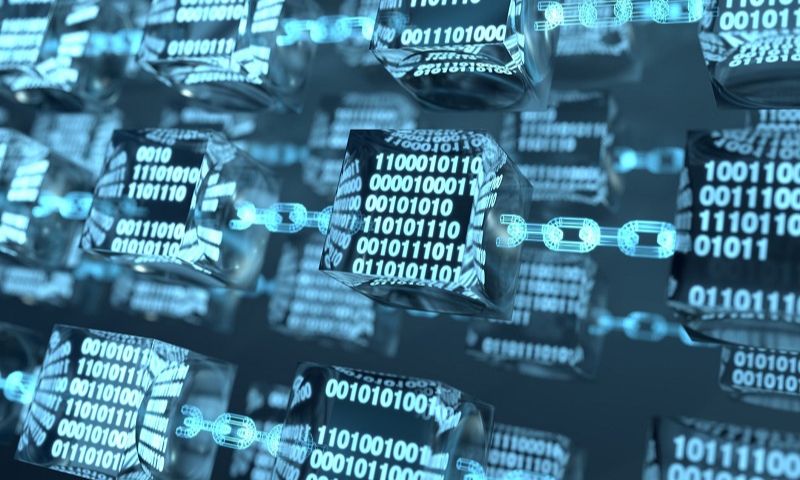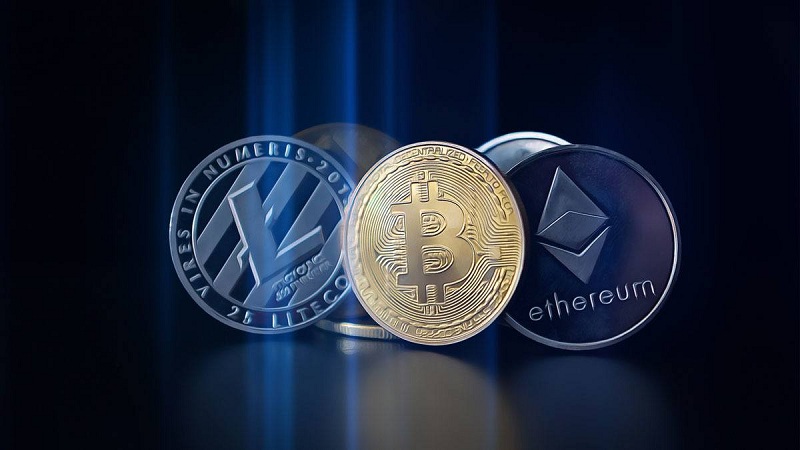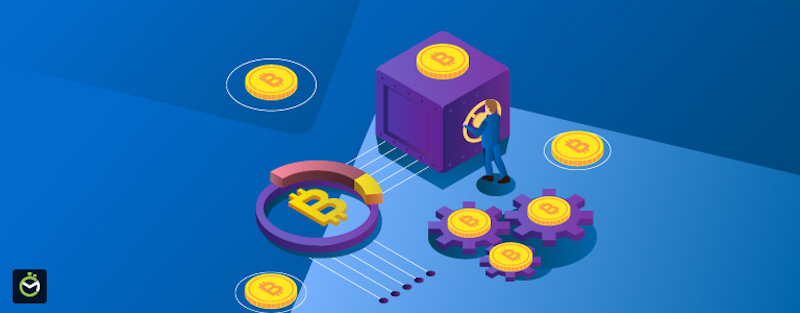Blockchain technology explained is like giving you the key to a new world of digital deals. You may have heard this buzzword but wonder, “What’s the real deal here?” I’m cutting through the tech talk to show you how it’s the spine of today’s most secure online trades. Get this: no jargon, just straight facts on how it changes the game. By the end, you’ll see how this tech touches money, contracts, and even voting, setting the stage for a world where every digital move we make is safe. Trust me; it’s not as complex as it sounds. Let’s dive in and unlock this digital marvel together.
Demystifying Blockchain: The Backbone of Modern Digital Transactions
Understanding Blockchain Fundamentals
Imagine keeping a notebook with your friends. You all write down every trade or deal you make. Everyone has their own page but the rules stay the same. That’s how blockchain basics work. It’s like a shared notebook for the world.
Blockchain is a list of records called blocks. They are linked using magic math called cryptography. Each block talks about the last one. This makes a chain of blocks – a blockchain.
Understanding blockchain means seeing how safe it is. When we add new blocks, everyone checks it. This means it’s hard to cheat. It’s a team effort. Everyone helps keep the notebook honest. That’s why folks trust it.
When you hear about “distributed ledger technology,” think of our shared notebook. It’s the same idea but in computers across the world. Every trade, or “transaction,” gets added to the notebook. Since it’s everywhere, no single person can mess with it. This keeps our data safe.
Unpacking Distributed Ledger Technology
Distributed ledger technology is just our shared notebook but super-powered. It’s everywhere at once. It uses special codes to make sure no one changes it in secret. This means your details are safe with blockchain.
People love how blockchain keeps things open. You can see all the deals made, but who made them stays hidden unless they want you to know. It’s private but also see-through. It’s a win-win for trust.
The secrets of blockchain are in how it works. Every trade, or “transaction,” that goes into our notebook must be okayed by everyone. This is our “consensus mechanism” doing its job. It makes sure we all agree before we write it down.
The ways we agree are called “consensus mechanisms.” Some use puzzles that need a lot of energy to solve. That’s “proof of work.” Others pick a few trusted friends to decide. That’s “proof of stake.” Both keep our notebook safe in their own ways.
Our shared notebook can do more than just write down trades. It can make them happen too. It can run “smart contracts” – rules we all agree on that work by themselves when certain things happen. This is big for business.
When folks say “blockchain network nodes,” think of them as your friends in our notebook example. Each is a computer holding a copy of our blockchain. They check and add new trades. This is what “decentralization and blockchain” means.
Blockchain makes things better by cutting out the middleman. It lets us trade directly with one another. This means no waiting, no extra fees. It’s faster and cheaper.
Sometimes, blockchains have a hard time talking to each other. That’s “blockchain interoperability.” It’s a big word, but it just means letting different blockchains work together. We’re fixing that as we speak.
As we use blockchain more, we’ll find even better ways to use it. We’re already using it in stores, hospitals, and places that keep our details safe. It’s not just about money; it’s about making all kinds of trades easier and safer.
And that’s why the future of blockchain technology looks bright. We’re just starting to explore what it can do. It’s a bit like the early days of the internet. We’re finding new ways to use it all the time. It’s going to change how we do everything. That’s pretty exciting, right?
The Mechanics of Blockchain: How Security and Consensus Drive Trust
Cryptography’s Role in Blockchain Integrity
Imagine a safe so strong no one can crack it. That’s what cryptography does for blockchain. When you hear “blockchain,” think of a digital chain of blocks. Inside each block, there’s data. This data gets locked up tight by cryptography. This means the info inside a block is super secure. Unless you have the key, you can’t change it. That’s how blockchain keeps your stuff safe.
Now, why does this matter? Trust. Cryptography means no one can mess with the data. When I send you digital money, cryptography checks it’s really me. Then, the transaction goes into a block. Once it’s part of the blockchain, it’s locked in. We all need this kind of trust online, and blockchain offers it.
Comparing Blockchain Consensus Mechanisms: Proof of Work vs. Proof of Stake
Let’s get into the engines that make blockchain go. These are called consensus mechanisms. It’s a big word for a simple idea: How do we all agree on what’s true? Proof of Work and Proof of Stake are two ways to do this.
Proof of Work is like a tough math puzzle. Computers race to solve it. The winner gets to add a new block to the blockchain. But this takes lots of computer power. That uses a lot of energy, which can harm our planet. It’s like having a giant room of people all trying to solve a puzzle, and the fastest one wins.
Then there’s Proof of Stake. In this one, you don’t need all the computer muscles. It’s more like a raffle. If you hold more of the currency (that’s your “stake”), you’ve got a better chance to add a new block. This saves a lot of energy. So, it’s like if the more tickets you buy, the better chance you have to win the raffle.
Both these methods help keep the blockchain true and fair. They stop people from faking transactions. But they work in different ways. Proof of Work is the old school way. Bitcoin uses it. Proof of Stake is newer and uses less power. Ethereum is moving to this method.
So why do we need these? It’s all about making sure everyone plays by the rules. If we can’t trust our digital systems, they’re no good to us. Both Proof of Work and Proof of Stake help us trust that the blockchain is right. They make it so everyone’s on the same page, which is key for a system where trust is everything.
Smart Contracts and Decentralization: Enhancing Efficiency Across Industries
Driving Business Innovation with Smart Contracts
Smart contracts change how we make deals. Think of them like vending machines. You pick a snack, pay, and the machine gives it to you. No one else needs to help. In business, smart contracts do similar things. They follow set rules, and when those rules are met, they take action by themselves. This means no waiting for someone to do their job or to say “yes.” Everything is faster and less costly.
When a contract is done right, you can trust it. It saves time, too. Also, smart contracts run on blockchain, making them super secure. But wait, what’s blockchain? It’s a bunch of computers together, keeping the same records. It’s hard to change these records, so everyone knows they can trust them. This trust is a big deal when you’re doing business.
These contracts help in many fields. They make supply chains clear so you know where things come from. They keep health records safe and easy to share with only the right people. They even let artists sell their work directly to fans. All industries can find ways to use smart contracts to work smarter.
Decentralization in Blockchain: Beyond the Hype
Decentralization is a key part of blockchain, but what does that mean? It’s about spreading out control. Instead of one place or person in charge, many different ones are. This is good because it’s harder to mess with or break the system. A wave can’t knock down a ship with a lot of little engines.
Blockchain puts this idea to work. It uses many computers, called nodes, to hold bits of the whole picture. Each has the same info, so if one goes down, the rest are still up and running. This setup works great for security. Hackers can’t just hit one spot and win. They’d need to hit more than half at the same time, which is really hard to do.
To add new info, most of these computers must agree. This is called consensus, and it’s like a team high-five. They make sure everything is just right before moving on. We see two types often: proof of work and proof of stake. Both ways help make sure everyone plays fair. Proof of work uses puzzles that take time and power to solve. Proof of stake lets those with more at stake have a say. Each way has its uses.
Understanding blockchain helps us get why it’s more than just tech talk. It gives power to the people. It cuts out middlemen. And it opens doors to new ways of doing things. We see just the start of what it can do. From artists to banks to your local store, it offers a new way to think about and handle trust.
The Evolving Landscape: Blockchain’s Challenges and the Path Ahead
Addressing Blockchain Scalability and Interoperability Issues
Let’s dive into a big word called “scalability.” In simple terms, it means making something big enough to handle a lot of action without slowing down. With blockchains, we want to make sure they can handle loads of transactions fast. Right now, some blockchains might get slow when lots of people use them at once. It’s like when too many cars try to squeeze onto a road, and traffic gets stuck.
Now, think of two different playgrounds with kids speaking different languages. Blockchain “interoperability” is about getting those kids to play together in harmony. Different blockchains have their own rules and ways of working. We want them to talk to each other and share info smoothly. Think of sending a text from an iPhone to an Android phone. That’s what we’re aiming for in the blockchain world.
Envisioning the Future of Blockchain Technology and Innovation
The future of blockchain is like a seed ready to sprout into something big. Think about all the ways we can use this tech. It’s not just for money like Bitcoin. We can use it to keep track of food from farms to stores, or make sure the pills we take are safe. It can even help us vote from our couches!
Companies are coming up with smart ways to use blockchain to make work easier and faster. This can make things less costly and create trust where it’s needed. For example, when a business uses blockchain, they cut down on paper and mistakes. It’s like having a super-smart robot that can’t lie, making sure everyone plays fair.
Looking ahead, we might see this tech change even more things. It could help us share energy like sunlight power between houses. It could stop people from cheating in games. It could also make the internet safer for everyone.
In all, blockchain today is a bit like a young superhero. It has great power and can do good stuff, but it needs to learn how to handle its strength and work with others. People like me are around to help that happen, teaching the tech how to grow up and do even more amazing things. So, stay tuned – the blockchain adventure is just getting started!
We dove into the complex world of blockchain, exploring its key parts and how it’s changing the way we handle digital deals. From the basics to its role in making data secure, blockchain is huge in today’s tech. We saw how tricky math keeps our stuff safe and why everyone has a say in the network’s rules. By using smart deals and sharing power, this tech not only speeds up business but also shakes things up, big time.
Yet, for all its perks, blockchain faces real tests. Will it grow to meet our needs? Can different blockchains work together smoothly? What’s next in its story? These are tough nuts to crack, but solving them might just pave the way for even cooler innovations. As we look ahead, one thing’s clear: blockchain’s journey is just getting started, and it’s set to spin up even more smart solutions and chances to share the power in the digital world. Stick around – this is one ride you won’t want to miss.
Q&A :
What is blockchain technology and how does it work?
Blockchain technology is a decentralized digital ledger that records transactions across many computers so that any involved record cannot be altered retroactively, without the alteration of all subsequent blocks. This chain of blocks (blockchain) is maintained by a network of nodes, making it resistant to data tampering and fraud. Each block in the blockchain contains a cryptographic hash of the previous block, transaction data, and a timestamp.
Why is blockchain technology important?
Blockchain technology offers a secure and transparent way to conduct transactions without the need for a central authority. This is important because it can reduce the possibility of fraud, increase trust in transactions, and bring about significant cost and time efficiencies. Furthermore, it underpins cryptocurrencies like Bitcoin and Ethereum but has potential applications far beyond the financial sector, including logistics, intellectual property rights, and secure voting systems.
What are the key features of blockchain technology?
- Decentralization: Unlike traditional centralized systems, a blockchain is distributed across a network of computers, reducing the risk of centralized failure and ensuring that no single entity has control over the entire network.
- Immutability: Once data has been added to the blockchain, it is extremely difficult to change. To alter any information on the blockchain would require a consensus from the network and changing all subsequent blocks.
- Transparency: Every transaction on the blockchain is visible to anyone who has access to the network. This transparency builds trust among users.
- Security: Each transaction is encrypted and linked to the previous transaction via cryptographic hashes, which, along with the network’s consensus mechanism, makes the blockchain very secure against fraudulent activities and hacks.
How can blockchain technology be applied in real-world situations?
Beyond cryptocurrency, blockchain technology has a wide array of real-world applications including supply chain tracking, providing proof of provenance for goods, enabling secure and transparent voting systems, streamlining cross-border payments, and managing identity verification and medical records. Each use case leverages the intrinsic features of blockchain, like decentralization, immutability, and transparency to solve complex issues in various industries.
What are the limitations and challenges of blockchain technology?
While blockchain has transformative potential, it also faces significant challenges and limitations:
- Scalability: As the size of the blockchain grows, so does the need for computational power to process and store large amounts of data.
- Energy Consumption: Certain blockchain implementations like Bitcoin’s proof-of-work consensus mechanism require substantial amounts of energy.
- Regulation: The decentralized and international nature of blockchain creates regulatory challenges regarding legal jurisdiction and compliance with varying laws across countries.
- Complexity: Widespread adoption of blockchain technology is hindered by its technical complexity and the need for a better understanding among the general public and enterprises.
These challenges need to be addressed for blockchain to realize its full potential across various sectors.






